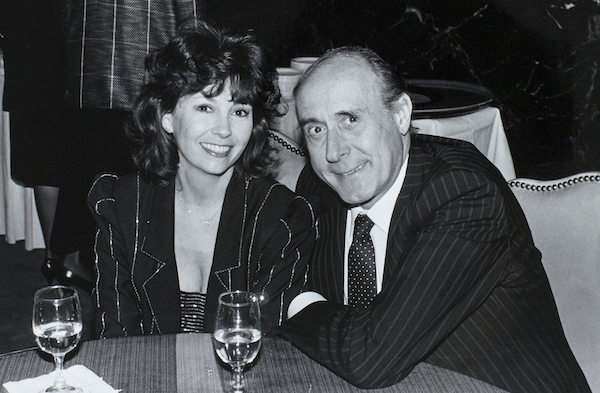Henry Mancini, Charade (1963): Someone once described the greatness necessary for winning a pro golf tournament as something within the reach of a rarified group of extraordinary players. Some may have a moment when they're able to transcend limitations, anxieties, etc., and do the unlikely. But the circle of greatness is far smaller for those that can do it again and again. Same with music: The Beatles are used often as exemplars of the pinnacle of extraordinariness. But considering the history of pop music, they were many progenitors of serial slaying – Richard Rogers, Scott Joplin, George Gershwin, Brian and Eddie Dozier, Duke Ellington, John Barry, Michael Stoller (of Lieber & Stoller), Stevie Wonder, Kenny Gamble and Leon Huff, Carole King, Brian Wilson, and somewhere near the heap’s top:
Mr. Versatile, Henry Mancini.
But unlike most of the above, he was exclusively a composer of soundtrack music. The demands on his compositional and color range were far greater than any of those other nine-to-fivers. Compare Baby Elephant Walk, Peter Gunn, Moon River, Shot in the Dark, The Pink Panther, or The Days of Wine and Roses. Also, no small accomplishment, he may’ve co-invented the spy genre with Monty Norman (the James Bond Theme) and John Barry (Goldfinger, Thunderball, Diamonds Are Forever, etc.). And while Henry was no rocker, rock and roll without Peter Gunn would be too awful to imagine.
 |
| The maestro getting to the chorus |
As to why Charade slayed
That melody: It's been argued that music is melody, way on top in a hierarchy including rhythm, harmony, timbre, and form: Music is the emulsion and melody are the flavor bits that separate, say, the dull greasy saltiness of canned gravy from the sensual orgy of a Bernaise. It's also something humans have a knack for recognizing beginning at birth. Melodies connect with us emotionally, like a virus to some cellular receptor. The best of them fit instantly. And that some melodies will connect profoundly to millions while others don’t is the mysterious voodoo that is music.
Mancini was a master at understanding the colors of the emotional spectrum and how they converted into manipulative sounds. The pointy heads describe it thusly:
Different types of melodies also help to convey different emotions, for example chromatic melodies or melodies belonging to a minor scale...the emotions of melodies mirror the emotions of speech. Just as sad people tend to talk in a monotone, sad music tends to move in very small intervals within a narrow range. In contrast happy people talk within a greater tonal range, and happy music follows this pattern using larger intervals over a wider range.
Charade from four angles:
1) Charade elevated on the ridiculously smooth bordelaise that is Johnny Hartman’s voice.
2) The master’s original from the film it was written for.
3) A loungey, fake jazz version from the cool 90s San Francisco outfit, Oranj Symphonette – their roster included Dave Brubeck’s son Matt and P.J. Harvey alum Joe Gore, to whom we owe the ingenious guitar riff.
4) My Canadian crush, Holly Cole: breathy and mature, satin and gloves to the elbow, knowing and still cute.


No comments:
Post a Comment